|
Join NH Fish and Game’s Let’s Go Fishing Program at the NH Fly Fishing Show on February 24, 2018 as we offer two free fly tying programs.
From 10-11:30 am fly tying instructor Scott Biron will offer free a beginner tying class. All materials, tools and equipment will be supplied. New tyers or beginners will learn to tie a soft hackle fly. Registration is required and spots are limited. Registration is online at: https://nhfishandgame.com/EventWeb/Event/ReservedEvents use the code NHFF1 From 1-2:30 pm fly tying instructor Scott Biron will offer free a intermediate tying class. All materials, tools and equipment will be supplied. Intermediate tyers with 2 or more years of experience will learn how to tie an effective NH fly pattern you can use this spring. Registration is required and spots are limited. Registration is online at: https://nhfishandgame.com/EventWeb/Event/ReservedEvents use the code NHFF2 For more information on the show go to http://www.merrimacktu.org/fly-fish-new-hampshire-show-2017/
1 Comment
I was visiting with a friend an few weeks back and he has a great deal of NH fishing experience. We were discussing Lake Sunapee, which is basically in my back yard. It's a lake I drive by a lot and always say to myself......I need to fish that lake at ice out this year. Determined to do it I began poking around at fly patterns that might work. My friend said he knew people who fish a Purple Smelt back in the day and the results were good. In my research I came upon Ora Smith's Purple Smelt Pattern in both a tandem and on a single streamer hook.
I never met Ora but I have researched him and spoked to loads of folks who knew him. My guess is he was a practice tyer and used materials that he could get locally. One thing that he used a lot of was teal flank feathers for cheeks on streamers. Last year I tied a load of his patterns and had great results with many that had teal cheeks. We will give it a try on Lake Sunapee this spring and report back. Ora Smith was one of the first NH fly tyers I studied under the NH Traditional Arts Grant in 2017. There has been a lot written about him and he had hundreds of patterns. I would consider him a Monadnock fly tyer being based in Keene, NH. Many of his patterns were specifically tied for waterbodies in the Monadnock region. Many of his patterns were named for the person he tied them for and sadly most have faded away. A percentage of his flies became and remain popular state wide. Years ago I was tying his Canopache pattern at the Fly Fishing Show and my friend Ron Sowa came by. He shared this story about the fly. There were some camps in Wolfeboro, NH called the Canopache Camps. Ora trolled the fly along the shoreline where the camps were and the results were very good.....and that is how fly got it's name. The camps are no longer there but Canopache Road marks their spot. I could not tie these flies fast enough at the show and get the eyes painted on them. Customers were scooping them up in handfuls. As part of the grant I researched most of his fly patterns and tied many at area shows. As with many patterns they evolved as materials became too expensive or newer materials became available. I challenged myself to tie a large number of his lesser known patterns and also fish them. Interestingly, almost all of them caught fish. The video that is below is from a tape that my friend Gary Cutter took in 1998. Ora discusses how he began fly tying, the price of materials, the Maynard Marvel fly and you see two customers at his house buying flies. 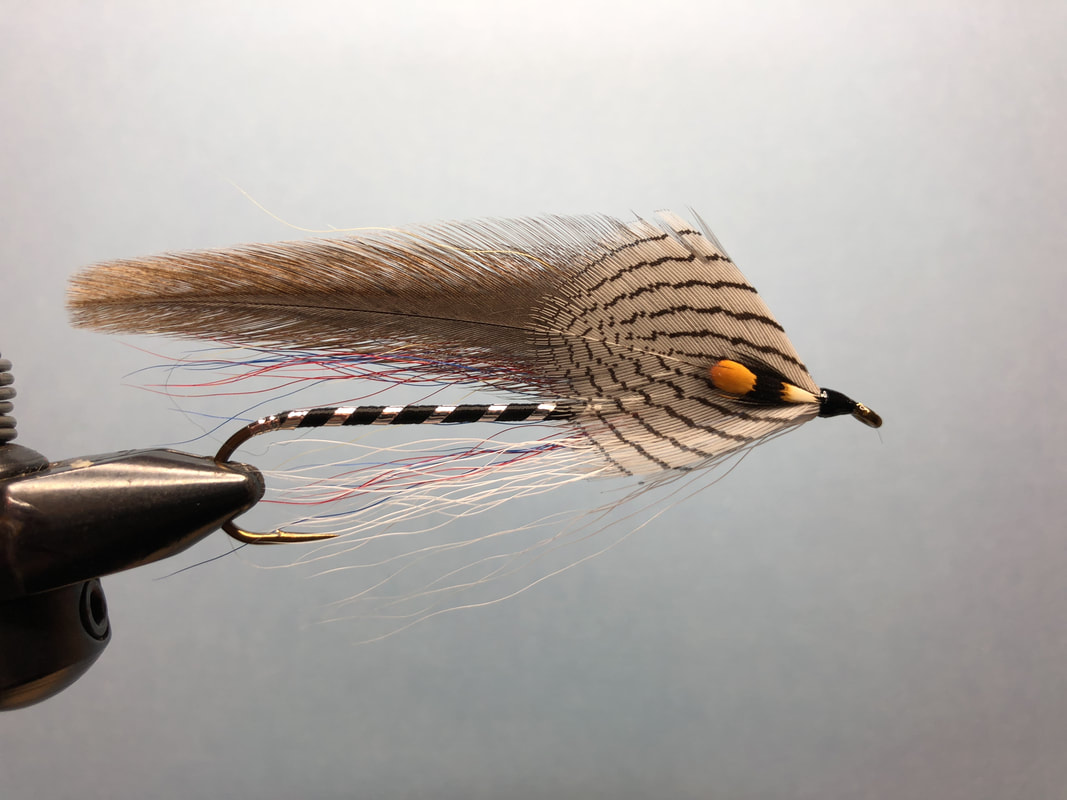 There is something about this fly pattern that makes it both fun to tie and very effective to fish. It's another pattern that was developed by Jim Warner to be fished in Lake Winnipesaukee......and yes there is a story behind it. The fly was created at the request of George and Helen Babb. They were from Alton Bay and as best as I can figure out may have owned a shop that amoung other things sold flies. The story goes that they ask Jim to tie them a Grey Ghost but to modify it by adding three primary colors. The colors were, blue, red and yellow bucktail and as the fly was fished they would mix up a bit which made the pattern highly effective. Years ago I saw a video of Jim tying a fly and he shared a story about some customer coming in his shop and looking at the board of Grey Ghosts for sale. He went on to say the guy chose the most perfect Grey Ghost, took it out of the package, placed it on the floor and ground the fly into the floor with his foot. Then he held the up the fly and proclaimed "now thats a Grey Ghost". They guy was no more than 20 yards off the dock trolling when he caught a salmon. The underlying point to this story and the Babbs Ghost is that the more beat up, mixed up a fly looks often contributes to its effectiveness. I also feel the the combination of the three colors of bucktail blend to give off a real smelt like color. Babbs Ghost Jim Warner Pattern Hook: 10X Streamer hook in 2, 4 or 6 Tag: Silver mylar Body: Black floss 4 strands Rib: Silver mylar #14 12 wraps Belly: Sparse white bucktail as long as the wing Wing: First layer--sparse blue bucktail Second layer--sparse red bucktail Third layer--sparse yellow bucktail Topped with 4 blue dun saddle hackles Shoulder: Silver pheasant Cheeks: Jungle cock Tying notes: I've seen the bucktail tied over peacock herl. The fly does out really nice if you tie the black floss in at the head using two strands and then wrap back and then forward doubling it and giving you the four strands. Happy New Year 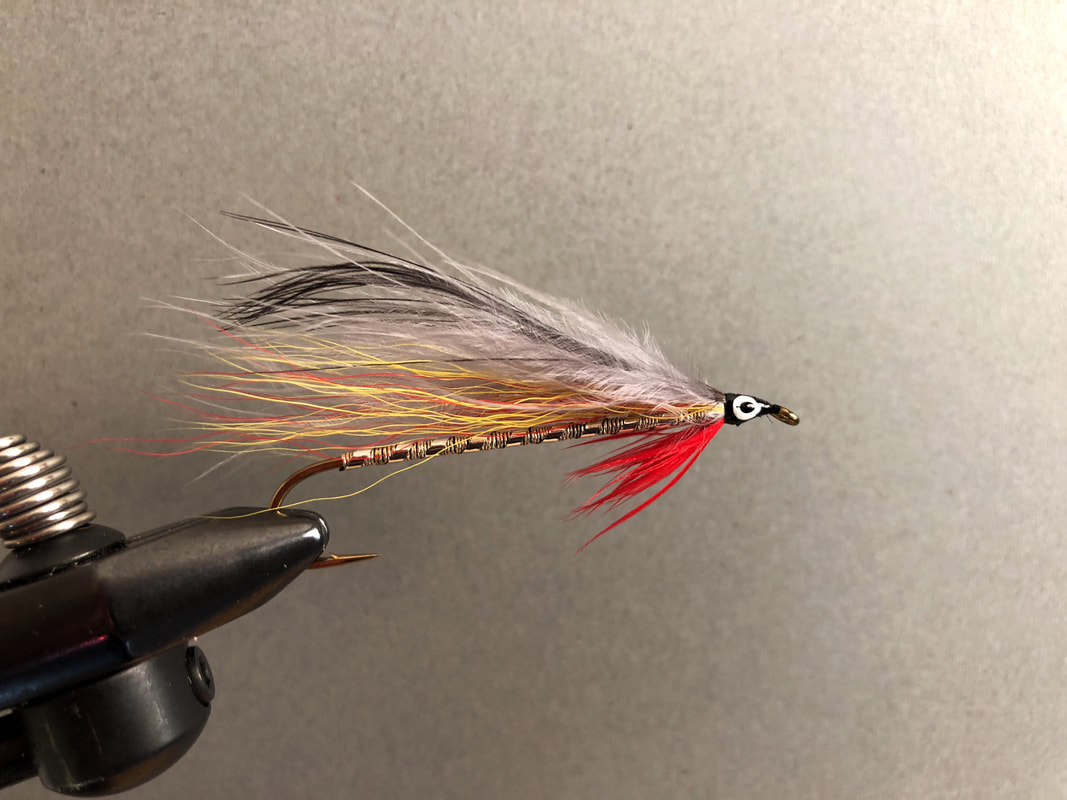 Melvin Bay fly pattern was one of Jim Warner's creations. As with many flies there is a story behind them. I have a handful of his files, some are his creations others are patterns he tied for his shop that others created. I have a bunch of Carrie Stevens patterns that he tied and sold in large numbers. He had a pattern called the Wolfeboro Bay which was basically a Mickey Finn that was topped with a white marabou plume. The Melvin Bay was identical to the Wolfeboro Bay but he substituted a dark blue dun marabou plume in place of the white one. Story goes that he was trying to wean a few of the locals off the traditional Grey Ghost which is how the Melvin Bay came about. I've seen this fly tied many times and often the marabou is very light grey. My understanding is the color of the marabou needs to be dark blue dun. It is supported in the flies I have of Jim Warner......all the grey is dark blue dun. The challenge comes in finding the marabou in the dark blue dun. When I see it, I scoop it up because os is hard to come by. The body on this fly is very unique. It is wrapped with silver oval tinsel and ribbed with flat river tinsel. I often have this as a pattern to sell at shows I tie at. If a real die hard Winnipesaukee angler comes by my table and sees one of these flies it gets an immediate reaction. Usually the story starts with "thats a deadly pattern". Hook Partridge Heritage 7 or 9x down eye streamer Body Silver oval tinsel ribbed with flat silver tinsel Throat Red hackle fibers Wing First layer sparse yellow bucktail or capras Second layer sparse red bucktail or capras Third layer dark blue dun marabou plume Fourth layer black silver pheasant crest or black ostrich herls Head White eye with black pupil My grandfather had one of the first fishing camps at the base of Braggs Bay on the Androscoggin River in Errol. I was lucky to learn to fly fishing on that river. My relatives always created abuzz around the camp when it came to fly fishing. My father tells stories of former game warden Harry Hurlbert who sold the land to build the camp to my grandfather and how he was a regular visitor on the front porch sharing many stories.
I was visiting Ellis Hatch some time ago and talking NH fly tyers and old flies. He showed me some old patterns and one called the Deer Wing Alder fly. Each of the patterns he showed me had a name listing the originator of the fly, except the Deer Wing Alder. The pattern immediately looked familiar to me from my youth but I could not remember where I had seen it. I reached out to former game warden and now expert guide at Owls Roost Outfitters, Rick Estes. Rick and I have shared many stories about NH flies and their tyers. Through our correspondence we uncovered that Paul Maruca was the originator. Paul had a fly tying area in the Errol general store. My grandfather had frequented the store and realizing my interest in fly tying allowed me the opportunity to see this fly tied on one of our visits. I remember my Uncle Mike tying this pattern and using it around the Alder hatch. Eventually the pattern became a family favorite fished in small sizes 12-16 to imitate adult caddis and in larger sizes 10-12 for the Alder hatch. Deer Wing Alder Tail: Brown hackle fibers, I use about 8 fibers of stiff tailing fibers and I get them from Collins Hackle Farm in NY Body: Peacock herl wound over head cement, I use 3-4 Wing: Natural deer hair, I use comparadun hair because it does not flair too much when tied in. Hackle: Brown, to to the size of the hook and two turns should be enough. Tying notes: I teach this fly in a lot of my fly tying classes. One of the keys to this fly is to not overdress it by using too much deer hair for the wing or too many turns of the hackle. Sharing fly patterns for many sometimes is done under secrecy. I’ve seen guys scoot away from someone who asks them what fly they were using. In the article on fly tying in the 1956 NH Profiles the author struggled to get quality NH patterns from local tyers. Unfortunately, that’s the way a lot of these patterns have disappeared or changed so they no longer look like the original.
|
AuthorScott Biron is a fly tyer from New Hampshire. Archives
December 2023
Categories |
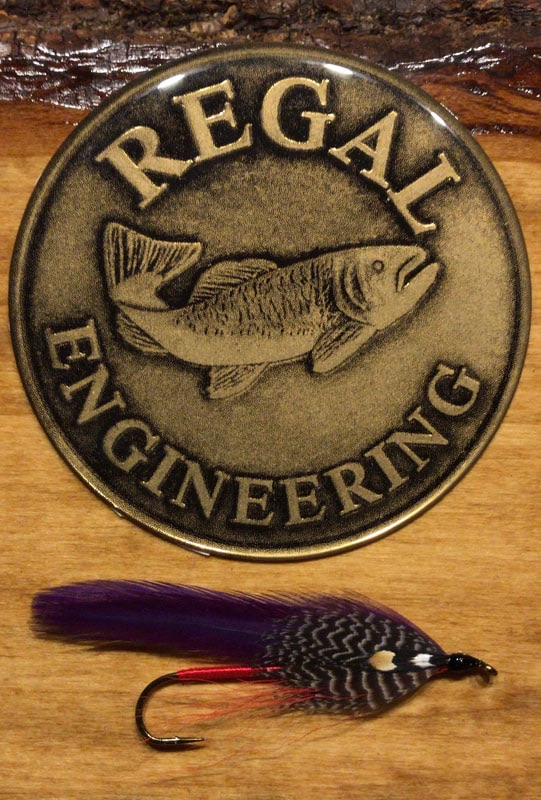
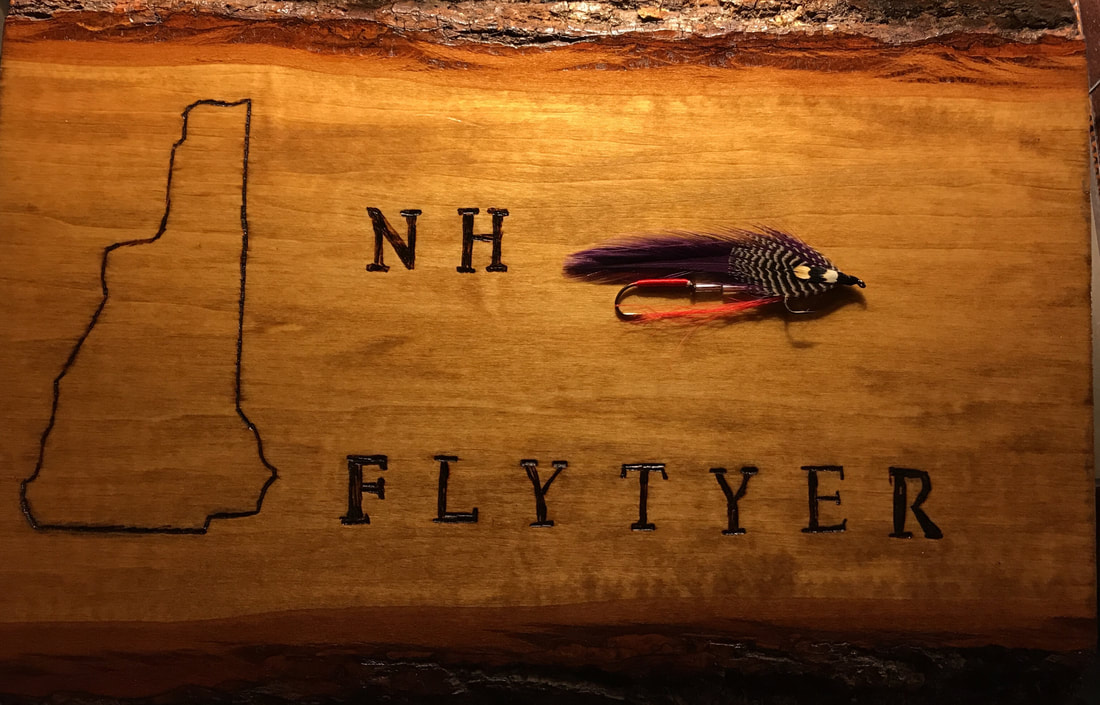
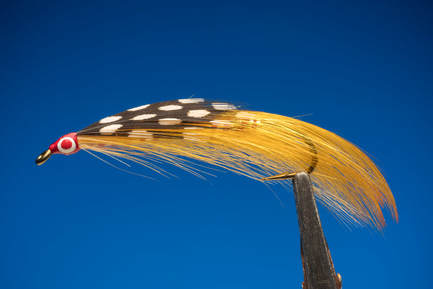
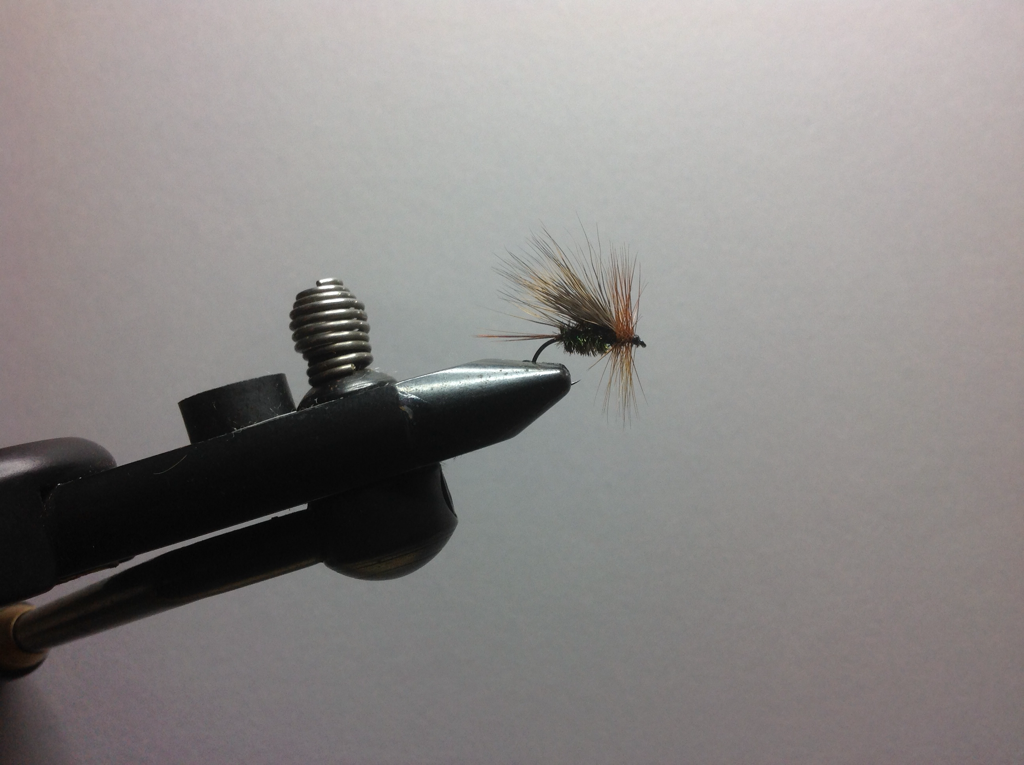
 RSS Feed
RSS Feed